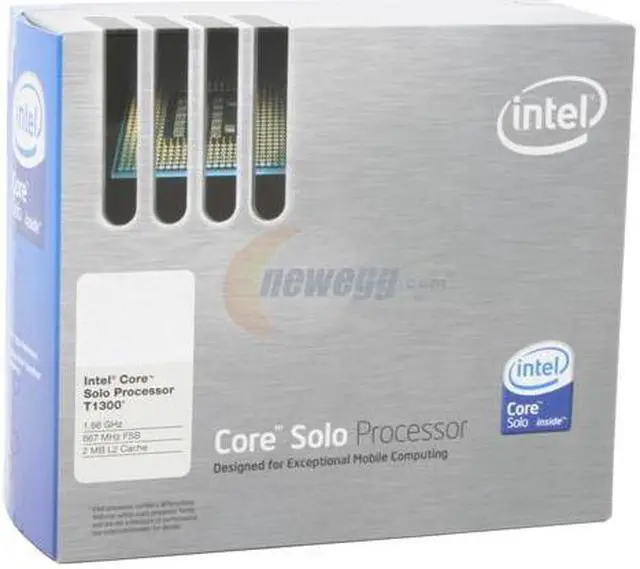Your Browsing History

Make informed decisions with expert advice. Learn More
Any questions? Our AI beta will help you find out quickly.
 Intel Centrino Mobile Technology Support (with Intel Core Solo processor)Featuring the Intel Core Solo processor, Mobile Intel 945 Express family chipset and Intel PRO/Wireless 3945ABG network connection, Intel Centrino mobile technology (with Intel Core Solo processor) offers enhanced capabilities for outstanding on-the-go performance, low power usage and communications.
Intel Centrino Mobile Technology Support (with Intel Core Solo processor)Featuring the Intel Core Solo processor, Mobile Intel 945 Express family chipset and Intel PRO/Wireless 3945ABG network connection, Intel Centrino mobile technology (with Intel Core Solo processor) offers enhanced capabilities for outstanding on-the-go performance, low power usage and communications. Enhanced Intel SpeedStep Technology SupportMultiple performance modes enable optimum performance at the lowest power, using real-time dynamic switching of the voltage and frequency between multiple performance modes based on CPU demands.
Enhanced Intel SpeedStep Technology SupportMultiple performance modes enable optimum performance at the lowest power, using real-time dynamic switching of the voltage and frequency between multiple performance modes based on CPU demands. Execute Disable Bit (EDB)Intel's Execute Disable Bit function can prevent certain classes of malicious "buffer overflow" attacks when combined with a supporting operating system. Execute Disable Bit allows the processor to classify areas in memory where application code can execute and where it cannot. When a malicious worm attempts to insert code in the buffer, the processor disables code execution, preventing damage or worm propagation.
Execute Disable Bit (EDB)Intel's Execute Disable Bit function can prevent certain classes of malicious "buffer overflow" attacks when combined with a supporting operating system. Execute Disable Bit allows the processor to classify areas in memory where application code can execute and where it cannot. When a malicious worm attempts to insert code in the buffer, the processor disables code execution, preventing damage or worm propagation.